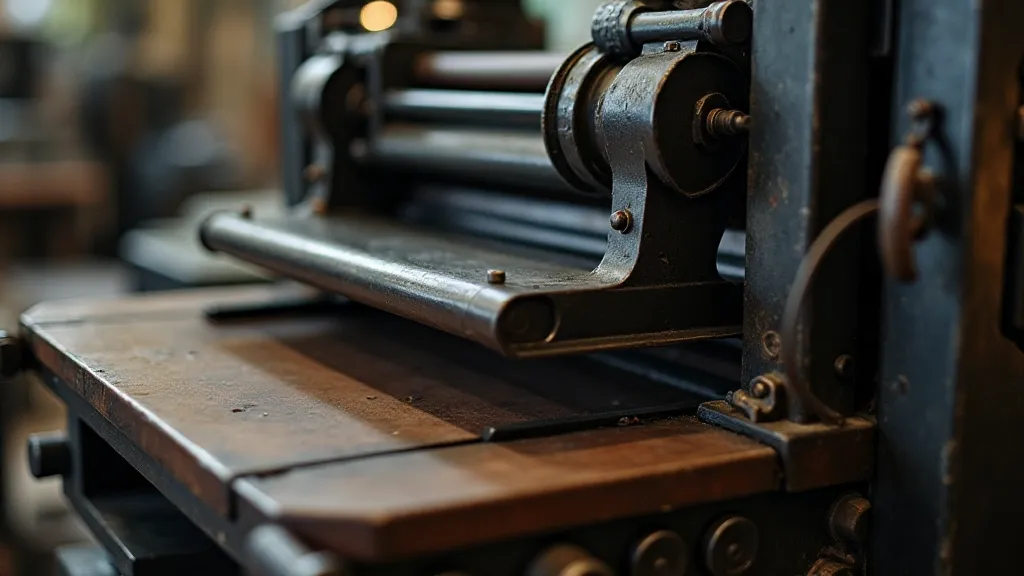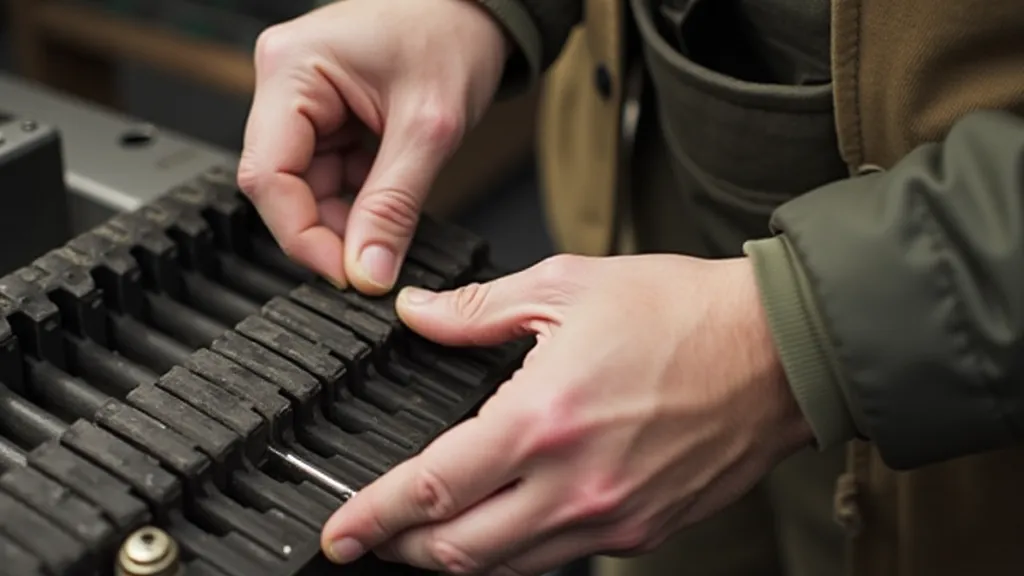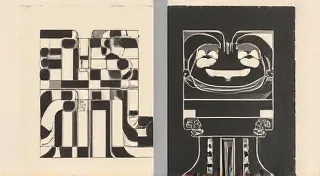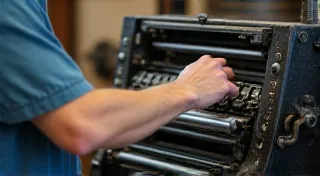Locking Up a Letterpress Form: Step-by-Step Instructions
Locking up a letterpress form is a crucial, and often intimidating, step in the letterpress printing process. It's the careful and precise securing of all your type, blocks, and other image carriers onto the chase (the metal frame that sits on the press). A well-locked-up form ensures even inking, crisp impressions, and avoids costly damage to your printing press and materials. This guide breaks down the process for beginners, making this vital skill more accessible. Understanding the historical context and evolution of this craft can also enrich the experience; a deep dive into a brief history of letterpress reveals a fascinating journey from Gutenberg's innovation to the modern revival we see today.
Understanding the Components
Before we begin, let’s clarify the key components involved:
- Chase: The rectangular metal frame that holds everything.
- Furniture: Small metal blocks used to fill empty spaces in the chase, securing the type and blocks.
- Quoins: Corner pieces that lock the chase into the press.
- Chase Locks: Mechanisms within the press that grip the chase.
- Type, Blocks, and Image Carriers: Your printing elements.
- Chase Bed: The surface upon which the chase sits within the press.
Step-by-Step Locking Up Process
- Plan Your Layout: Before you even touch the press, carefully plan the layout of your form. Consider the desired image, spacing, and margins. Dry-fitting the type and blocks in the chase (without securing them) is highly recommended. This lets you visualize the final print and make adjustments. This initial planning stage also touches upon fundamental principles of letterpress and typography – ensuring visual harmony and impactful design.
- Position Your Type and Blocks: Begin placing your type and image blocks into the chase, following your planned layout. Ensure everything is right-reading (meaning it appears correct from the pressman's perspective).
- Secure with Furniture: Fill any gaps between the type/blocks and the edges of the chase with furniture. Furniture should fit snugly but not be forced. This prevents movement during printing.
- Tighten the Furniture: Gently tap the furniture with a mallet to ensure a tight fit. A loose piece of furniture can shift during printing and cause issues.
- Check for Movement: After adding furniture, give the form a gentle shake to see if anything moves. If so, add more furniture to stabilize it.
- Quoins - Securing the Chase: Place quoins in the four corners of the chase, ensuring they are properly seated. These lock the chase securely.
- Lock the Chase: Use a chase locking tool to tighten the quoins. These tools are designed to prevent over-tightening, which can damage the chase.
- Transfer to the Press: Carefully lift the locked-up chase and transfer it to the chase bed of the press.
- Engage the Chase Locks: Most letterpresses have chase locks. Engage these to firmly secure the chase onto the press. Make sure they are properly locked.
- Final Check: Before printing, give the locked-up form one final check to ensure everything is secure and aligned.

Beyond the Basics: The Future of Letterpress
The process we’re discussing is steeped in tradition, but letterpress isn’t static. The field continues to evolve, adopting new technologies and techniques while preserving its unique charm. What does the future of letterpress hold? Expect to see further integration of digital workflows, innovative materials, and a renewed focus on sustainable practices.
Common Pitfalls and Tips
- Don't Rush: Locking up takes patience and attention to detail. Rushing increases the risk of errors.
- Furniture Fit: Ensure furniture fits snugly but isn't forced.
- Check for Wobble: A wobbly form indicates instability and will affect print quality.
- Type High: Be mindful of the “type high” – the distance from the chase surface to the top of the type. This needs to be consistent for even inking. Maintaining consistent type high is crucial not only for ink distribution but also for ensuring precise registration in multi-color prints, a delicate art in itself.
- Practice Makes Perfect: The more you practice, the more comfortable and skilled you’re likely to become. Start with simpler forms to build confidence.

Delving Deeper: Materials and Considerations
The success of a locked-up form isn’t solely about the mechanics; it's also deeply connected to the materials used. Different papers and printing stocks react differently under pressure. Thin, delicate papers require a lighter touch, while thicker cardstocks demand a more robust locking setup. Experimentation and understanding the properties of your materials are key to achieving exceptional results. Consider the impact of humidity; changes in moisture levels can subtly shift type and blocks, affecting the stability of your form. Regular maintenance of your press and components is essential for consistent performance and longevity.
Troubleshooting Common Issues
Even with careful planning and execution, issues can arise. Uneven inking is a frequent complaint, often stemming from an inconsistent type high or a poorly locked-up form. Trapped air beneath the printing surface can also cause blemishes. Take the time to diagnose the root cause, rather than simply applying a quick fix. A thorough examination of your form, along with careful observation of the printing process, will reveal the culprit. Don’t be afraid to ask for help from experienced letterpress printers; their insights can be invaluable.
Expanding Your Toolkit: Specialized Equipment
While the basic tools for locking up a form are relatively simple, specialized equipment can streamline the process and enhance precision. A compensating stack, for example, helps to maintain consistent pressure across the entire printing surface. Furniture combs help organize and align furniture within the chase. Investing in quality tools demonstrates a commitment to the craft and elevates the overall printing experience. However, remember that skill and technique are far more important than expensive equipment. A practiced hand can achieve remarkable results with minimal resources.
Conclusion
Locking up a letterpress form is a fundamental skill in letterpress printing. While it may seem daunting at first, with practice and attention to detail, you can master this essential process and unlock the full potential of your letterpress printing projects. Remember to take your time, be methodical, and enjoy the process! The rewards – the tangible beauty and unique character of letterpress prints – are well worth the effort.





